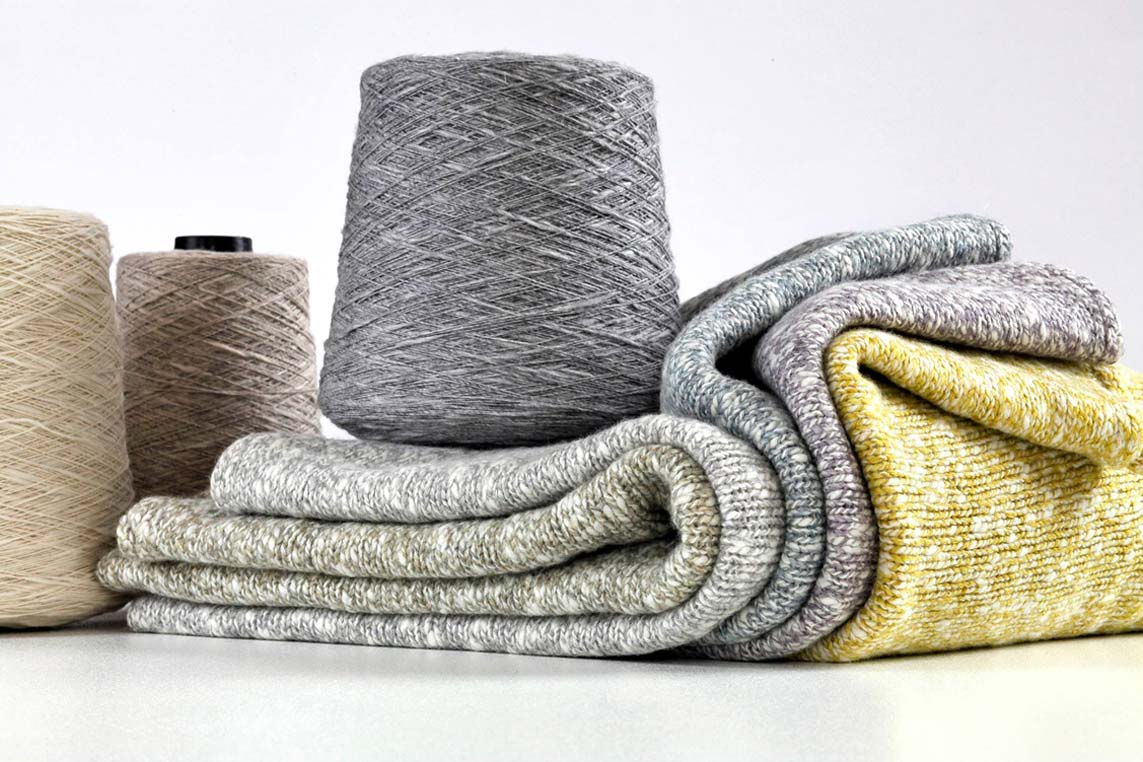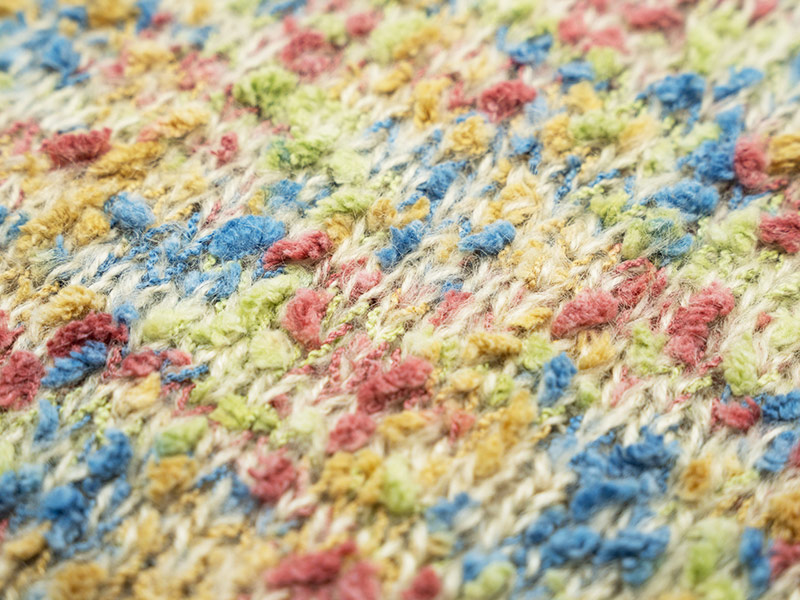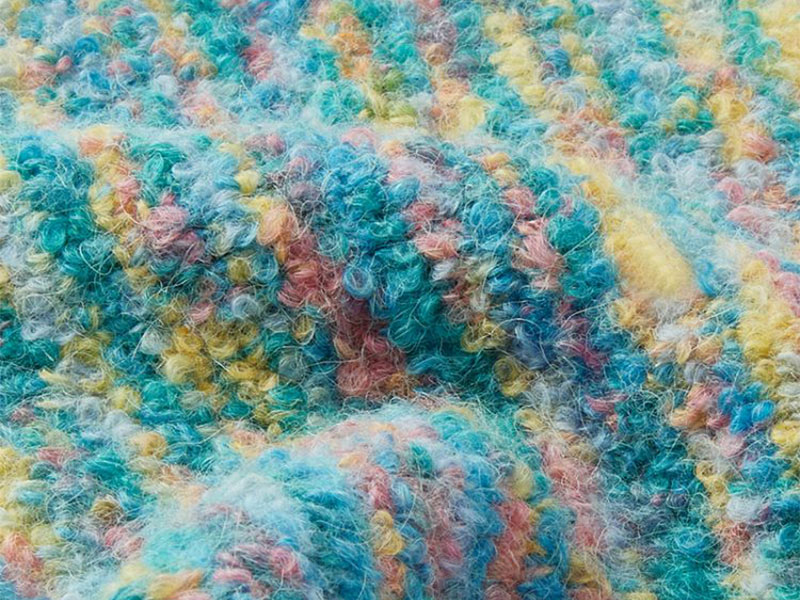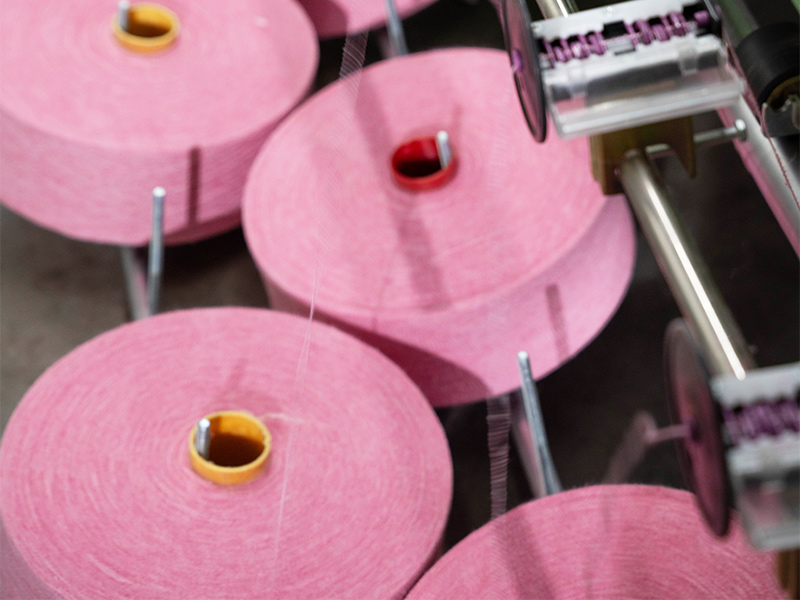How to Tell a Fancy Yarn Manufacturer What Kind of Yarn You Want
A single sentence, a touch, or a small piece of fabric can frequently spark an idea in the realm of fancy yarns.
But for a manufacturer to really get what kind of yarn you want, you need to be able to communicate clearly and effectively.
Even though we can visualize things clearly in our heads, our descriptions often don’t provide the technical details essential for production.
Designers and purchasers usually use pictures and feelings to get their thoughts across, whereas factories use scientific details like fiber composition, yarn count, twist, and structural design to describe a yarn.
This “language gap” sometimes causes the creative and technical sides to not understand each other.
That’s why it’s so crucial to understand each other.
Designers should endeavor to explain their ideas in more technical terms, and manufacturers should likewise try to understand the idea’s origin and aesthetic meaning.
So, how can you better explain your ideas and assist a high-end yarn maker really get what you want?
1. Begin with the End Use
For instance, we have hundreds of different kinds of fancy yarns at our organization, from conventional collections to completely unique patterns.
But first, we normally try to figure out what the yarn is for.
We can quickly narrow down the choices, talk about the intricacies, and finally get the exact yarn you need if you let us know what you plan to make with it.
If you mention that the yarn is for knitting, for example, we would instantly look at possibilities like brushed yarns, fuzzy yarns, or raised yarns, and then talk about the style and look you want to achieve.
We can then choose the best kind of fancy yarn for your project from there.
The yarn’s count, strength, and feel in the hand are also affected by how it will be used. These are the most important details that affect the final result:
Knitwear is soft, fluffy, and stretchy.
Hand-knitting yarns should be comfortable to touch and show off colors.
When it comes to outerwear yarns, durability and resistance to pilling are important.
By making the ultimate use clear, the producer can quickly locate the proper technological path.
2. Give any source You Have It Already
Physical Samples
The best option is to give a physical reference, like a short piece of yarn or a little knitted or woven swatch. We can virtually perfectly copy the yarn’s texture, color, and structure with a real sample. Our technicians can examine and copy something with just a few meters of yarn or a little piece of fabric.
Picture References
Photos are also very helpful if you can’t get a physical sample. You can send us pictures of the fabric’s texture, the yarn’s details, or the finished garment made with the yarn. These pictures give us a better idea of the overall style you want, whether it’s a soft mohair-like fuzz, a glossy metallic finish, or a thick, woolly surface. Then we may show you similar yarns to be sure they are what you want before you try them.
Material Direction
Please also tell us what kind of fiber you like most, such as acrylic, nylon, cotton, wool, or a mix of these. Every material has its unique traits:
Acrylic is light, soft, and colorful, making it a great choice for cheap fashion goods.
Nylon makes things stronger, more flexible, and shinier.
Cotton is breathable and comfortable, so it’s good for summer or casual wear.
Wool is warm, strong, and has a naturally rich texture.
We can pick the correct spinning base and then change the fancy effects once we know which way you want the fiber to go.
Descriptive Language
Don’t worry if you don’t have samples or pictures. You can write about the yarn in as much detail as you can.
For example: “Fluffy with a soft halo, medium density, and a little shine.”
“Matte and small, no hairiness, and a firm feel in the hand.”
“Lightweight with visible texture irregularities.”
When you add images or fabric samples to these descriptive phrases, they help us picture the design correctly and suggest yarns from our collection that go with it or even make a custom version.
We can answer faster and more accurately if you give us additional information.

3. Tell us what kind of hand feel you want
“Hand feel” is one of the hardest things to put into words about exquisite yarns, but it is also the most important.
Some frequent descriptions for how something feels in your palm are soft, elastic, smooth, fluffy, dry, hairy, delicate, dense, and light.
You can also talk about it in terms of how you plan to use it. For instance, “I want it to feel light and airy when knitted into a sweater—soft but not clingy, with a gentle loft.”
4. Discuss the structure and look of the yarn
There are many different kinds of fancy yarns, such as core-spun yarns, boucle yarns, slub yarns, brushed yarns, sequin yarns, metallic yarns, and more.
Even if you only say it’s “fluffy,” “looped,” or “sparkling,” the manufacturer will typically get the basic idea of what you’re going for.
5. Set the Color and Count (Thickness)
The yarn count (Nm) tells you how many meters of yarn weigh one gram. This is how thick the yarn is.
To put it another way, you can find it by dividing the length by the weight.
If a 1-meter piece of yarn weighs 0.2 grams, the count is 5 Nm.
The bigger the number, the better the yarn.
For example:
1/4 Nm—pretty thick
1/9 Nm – medium thickness
1/14 Nm—pretty fine
6. Make sure you know what kind of samples and tests you need.
Before deciding on the quality of the yarn, it’s important to look at the actual material. Ask the maker for yarn samples or knitted swatches to make sure.
There are usually two main steps in this process:
Giving yarn samples or color cards to help people choose; knitting a swatch to make sure the color and texture are right.
Please tell us the gauge (e.g., 12G, 7G) or fabric density if you need a knitted swatch. This will help the sample better show what your final product will be like.
Last Thoughts
Talking to the yarn mill is a creative process for the designer since they have to turn visual thoughts and physical sensations into technical terms. We want you to use your ideas and creativity, and our goal is to turn them into something real using yarn.
We don’t only want to be a supplier at Duoyou Yarn Manufacturing; we want to be your partner in developing new materials. We can help you with your projects from the very beginning, whether you’re a knitwear designer, a fashion company, or a textile studio.
Our team has a lot of experience in both the industrial knitting and hand-knitting areas. We know that every yarn has a narrative to tell about its texture, mood, and inventiveness. That’s why we want people to talk to each other and work together.
So, to sum up: If you have a sample, send it in. We can copy it or make it better.
Share a picture if you have one. We can recommend other yarns that are similar for you to try.
If you simply have a description, please tell us as much as you can about how it looks, feels, and works, as well as any brands or materials you know of that are similar.
The better the result, the more specific the information is. We can make a yarn that not only fulfills your needs but also inspires your next collection by merging your creative ideas with our technological know-how.
Related News
Discover more about the latest developments in the yarn industry, explore articles on development trends and innovative technologies, and provide you with more industry insights.

The Evolution of Fancy Yarns: From Ancient Craft to Modern Fashion
Fancy yarns are more than just textile materials—they are storytellers woven into the very fabric of fashion. With their unique textures, colors, and structures, fancy yarns breathe life into garments, giving each piece a distinct personality and voice. The fascinating evolution of fancy yarns reflects the intertwining progress of textile technology, cultural trends, and the human yearning for beauty and individuality.

Things You Need To Know About Using Boucle Yarn To Knit
Have you ever wondered how they are manufactured when you touch the three-dimensional circular fabrics? The answer is Boucle Yarn. This yarn, which has unique loop patterns and embossed textures (the French word “boucle,” which sounds like “boo-clay” and means “coiled” or “circular”), adds a lot of depth, visual appeal, and warmth to any project.

What Does Plied Mean in Yarn? Understanding Structure, Benefits & Uses
In the world of yarn and textile manufacturing, structure matters just as much as fiber content. One essential term you’ll often encounter is “plied yarn.” But what exactly does plied mean in yarn, and why is it so widely used across both industrial and handcraft applications?

